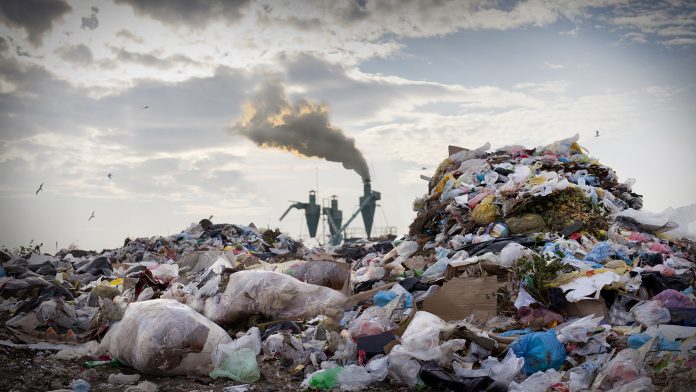In a groundbreaking study, researchers have discovered that the safe planetary boundary for pollutants has been exceeded.
In a first of its kind study, an international group of scientists have examined the cocktail of synthetic chemicals and other ‘novel entities’ flooding the environment and their influence on the stability of the Earth’s system.
The 14 researchers have determined that humanity has surpassed a planetary boundary linked to environmental pollutants such as plastics.
Emergence of pollutants
“There has been a 50-fold increase in the production of chemicals since 1950. This is projected to triple again by 2050,” explained co-author Patricia Villarubia-Gómez from the Stockholm Resilience Centre, Stockholm University. Plastic production alone has expanded 79% between 2000 and 2015, the team confirmed.
“The pace that societies are producing and releasing new chemicals and other novel entities into the environment is not consistent with staying within a safe operating space for humanity,” added Gómez.
Scientists have discovered that there are approximately 350,000 distinct varieties of manufactured chemicals on the global market. This incorporates plastics, pesticides, industrial chemicals, chemicals in consumer products, antibiotics, and other pharmaceuticals.
These are all completely unique entities, generated by human endeavours, and have generally undetermined consequences on the Earth system. Worryingly, substantial volumes of these novel entities enter the environment every year.
“The rate at which these pollutants are appearing in the environment far exceeds the capacity of governments to assess global and regional risks, let alone control any potential problems,” commented co-author Bethanie Carney Almroth from the University of Gothenburg.
Filling the gap in the analysis of planetary boundaries
In 2009, a transnational group of scientists detected nine planetary boundaries that delineate the extraordinarily stable state Earth has endured for 10,000 years.
These boundaries comprise greenhouse gas emissions, the ozone layer, forests, freshwater, and biodiversity. The team measured the boundaries that impact Earth’s stability and determined in 2015 that four boundaries have been exceeded. However, the boundary for novel entities was one of only two boundaries that stayed unquantified.
This novel research takes previous findings a step further.
The scientists explained that there are numerous ways that chemicals and plastics have damaging consequences to planetary health, from mining, fracking, and drilling, to waste management.
Negative impacts on planetary health
“Some of these pollutants can be found globally, from the Arctic to Antarctica, and can be extremely persistent. We have overwhelming evidence of negative impacts on Earth systems, including biodiversity and biogeochemical cycles,” said Almroth.
It is projected that global production and consumption of novel entities will continue to increase. As well as this, the overall quantity of plastics on the planet is now more than twice the mass of all living mammals, and approximately 80% of all plastics ever manufactured remain in the environment.
Plastics comprise over 10,000 other chemicals, so their environmental degradation produces novel combinations of materials, and thus, unparalleled environmental hazards. It is anticipated that plastic manufacturing will increase, and forecasts suggest that the release of plastic pollution in the environment will also rise, despite current efforts to reduce waste.
“Plastic production, use and waste affects other planetary boundaries as well. This includes climate, via fossil fuel use, land and fresh water systems via use, pollution, physical changes, and spread of invasive species, antibiotic resistance genes and pathogenic microbes in the oceans. Plastics have helped solve some environmental issues owing to their light weight and durability, but overuse and misuse is having devastating impacts on planetary health,” added Almroth.
The scientists determined that current increasing trends of chemical production and release present a substantial risk to planetary health. The authors of the study have stressed the necessity for action to decrease the production and release of pollutants.
“We need to be working towards implementing a fixed cap on chemical production and release,” explained Almroth.
“And shifting to a circular economy is really important. That means changing materials and products so they can be reused not wasted, designing chemicals and products for recycling, and much better screening of chemicals for their safety and sustainability along their whole impact pathway in the Earth system”, concluded Gómez.









